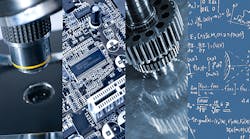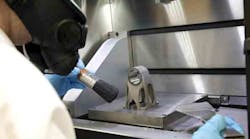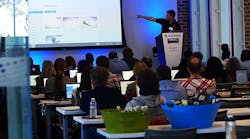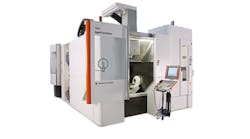Through twelve (or more) years of school, students learn about engineering and design. But the learning doesn’t stop there. The students graduating high school this year likely will be working until 2045 or later. What new skills will engineers need to develop in the next 30 years? Will our children be designing in holographic rooms with their hands or controlling manufacturing robots with their minds?
The truth is that no one knows what products engineers will be creating, or what tools they will be using in 2045. Ongoing learning in engineering and design is the only solution for keeping up-to-date with rapidly evolving technology in the emerging knowledge economy. Smart investments in ongoing learning will be the hallmark of successful engineers and high-growth companies in 2045 and beyond. Some key attributes will be:
Continuous Learning — By 2045, the days where students graduate from a university and are done with learning will be long gone. With rapidly evolving technology, in order for an engineer to stay relevant in the industry, he or she must continuously learn new skills while working to stay up-to-date with the latest technology and software.
This may be a challenge for many engineers who already work forty or more hours a week. Ongoing professional development will be necessary and employers need to understand the value of this. By dedicating work time for training, employers they can keep their employees well prepared for new tools and technologies. With constantly changing software programs and design techniques, engineers in 2045 will be dedicated to finding new ways to learn, grow, and improve their skills.
The most probable solution to the challenge of having to balance learning and work is through on demand education. On demand classes allow engineers to go back and forth through lessons, reviewing missed or forgotten material. Today, on demand education is absorbed through web-based video courses, interactive activities, and quizzes. In 2045, as instructional design continues to develop and its tools evolve, on demand education could be delivered through Google glass, microchips, or technology not yet imagined.
(Re)joining Design and Manufacturing — As 3D printers become less expensive and more accessible, they have already had an immense impact on rejoining designers with the manufacturing process. The next generations of additive manufacturing tools are going to continue to get exponentially sophisticated and technologically advanced.
Researchers are already working on 3D printing with human tissue for medical transplants. And engineers and scientists at Cornell University are currently working to build a TSA-like scanner that will copy and save one’s body features into a database, and print body parts to the exact dimensions. As additive manufacturing machines improve and the materials to be used advance, there is no limit to the innovations that designers can create from his or her own home or office.
Before the industrial revolution, artisans both designed and manufactured their products, connected from start to finish. Now, the maker movement is encouraging the same – full circle creation of goods from idea to final product. Engineers in 2045 will need to understand the entire design and manufacturing process, not just one piece.
A Green Leader — One of the greatest challenges that engineers will continue to face in the next 30 years is developing eco-friendly processes to conserve resources. Engineers will have to come up with techniques that will lead to the smallest carbon footprint.
Across every engineering discipline, global resources will be more of a priority as population grows. The three “R”s are unlikely to change — reduce, reuse, recycle — but the methods we have available to design, manufacture, and build engineering marvels with eco-friendly principles will undoubtedly evolve rapidly in the next 30 years.
So, what about today's engineers? We as a society are more mobile and more collaborative than ever. Cloud technologies are giving rise to new capabilities that harness incredible computing power and provide access to data from anywhere, any time, and on virtually any device. While we are more connected than ever, our tools are changing faster and faster. With this trend, engineers are able to develop their designs using the best possible tools available at any given time, but it will require them to be in a mindset of continuous learning in order to take full advantage of them.











